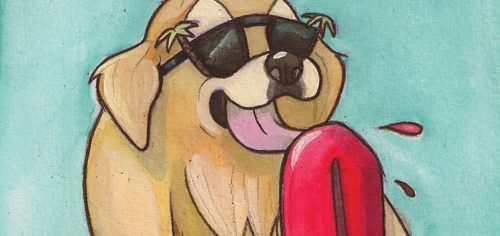

Pet Talk: How To Prepare For Your Pet’s Death
Methods of coping when the time comes
For many of us, the connection we share with companion animals extends beyond just friendly company; our pets are considered a part of the family. The truly unique love between an owner and their pet is something one has to experience to understand. Although a pet may be a very loved and important family member, it is important to be sensitive and aware of your pet’s needs as they age.
Sometimes owners are faced with difficult decisions when their pet reaches an age or health condition that no longer allows them to enjoy daily activities. Dr. Sarah Griffin, lecturer at the Texas A&M College of Veterinary Medicine & Biomedical Sciences (CVM), explains that euthanization is never an easy choice, but in some cases, it may be the best option for your pet.
“One of my professors in veterinary school told us that she tells clients to pick the pet’s three favorite things,” Griffin said. “When two out of three of those things are gone, it’s time to let them go. Many pets will continue to eat and drink even when they are in pain. Keeping a daily record of good vs. bad days sometimes helps you see the quality of life they are living.”
Some of the emotional struggles owners face when dealing with their pet’s death may be guilt and loneliness. An owner may have made the mistake of letting their pet outdoors to play with other animals, resulting in a fight or attack. Getting hit by a car is another danger owners face when letting their pets play outside. Some owners may even feel guilt for their pet’s death because they did not take them to the veterinarian after discovering symptoms of a potential disease or sickness. Whatever the case may be, many owners also suffer from loneliness after the loss of their pet.
“Pets are a part of our families. Recognizing the way you handle grief is important,” Griffin explained. “The first step in working through a pet’s death is acknowledging the way you feel. Share your feelings with close friends and family so they can support and encourage you.”
Griffin reminds pet owners who are suffering from a loss to remember their pet in a positive light. Keeping pictures on the shelves and other memorabilia of the pet can also help owners manage their emotions.
Dr. Stacy Eckman, clinical assistant professor at the CVM, reveals other ways that people cope with the loss of a pet. “Many people will rush to fill the void with another pet, while some people need more time to open their heart to another pet,” she said. “Volunteering at shelters or animal organizations can help people cope as well.”
Children can be especially affected by the loss of a pet. Sometimes parents struggle with giving their children an explanation of why Fido is no longer around to play. After recently experiencing the loss of Scooter, the family dachshund, Griffin recommends being patient with young children and encouraging them to express their feelings.
“We had a memorial service, shared memories about Scooter, and placed flowers over his grave,” she said. “We bought a book called I’ll Always Love You by Hans Wilhelm to help our daughter cope with the loss of Scooter.”
Eckman adds that communication is very important in helping children understand the loss of a pet.
“Be honest with your children—they may understand more than you think,” she said. “Explain in very broad terms, ‘Fido was very sick and could not do the things he really loved with you any longer.’ Give them space to grieve and an ear/shoulder to grieve on.”
Companion animals have a special talent for capturing our hearts and allowing us to experience a truly unique and unconditional love. No matter the circumstances, losing a pet is never easy. As an owner it is important to keep the health and well-being of your pet in mind when making decisions for the future.
Join the newsletter and never miss out on dog content again!
"*" indicates required fields
By clicking the arrow, you agree to our web Terms of Use and Privacy & Cookie Policy. Easy unsubscribe links are provided in every email.





